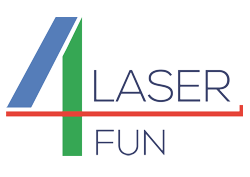Results of the work in the Laser4Fun project has been published as:
Jean-Michel Romano, Antonio Garcia-Giron, Pavel Penchev, Stefan Dimov (2018) Triangular laser-induced submicron textures for functionalising stainless steel surfaces. Applied Surface Science
Volume 440, 15 May 2018, Pages 162–169.
Abstract
Processing technologies that engineer surfaces with sub-micron topographies are of a growing interest to a range of optical, hydrophobic and microbiological applications. One of the promising technologies for creating such topographies employs ultra-short laser pulses to produce laser-induced periodic surface structures (LIPSS) that often result in non-regular, quasi-periodic nanoripples and nanopillars. In this research near infrared ultra-short pulses of 310 fs with a circular polarisation was used to texture ferritic stainless steel workpieces. A single-step process was designed to generate low spatial frequency LIPSS (LSFL) over relatively large areas. Apart from highly regular and homogeneous parallel lines with approximately 900 nm periodicity, extraordinarily uniform triangular-LSFL in hexagonal arrangements was created. The generation of such LSFL was found to be highly repeatable but very sensitive to the used laser processing settings. Therefore, the sensitivity of triangular-LSFL formation to the used laser processing settings, i.e. pulse to pulse distance, pulse fluence and focal plane offsets, were investigated in regard to the resulting morphologies and functional properties, i.e. structural colors and super-hydrophobicity. Finally, the capability of this technology for producing uniform triangular-shaped LSFL on relatively large surface areas of stainless steel plates was studied.
